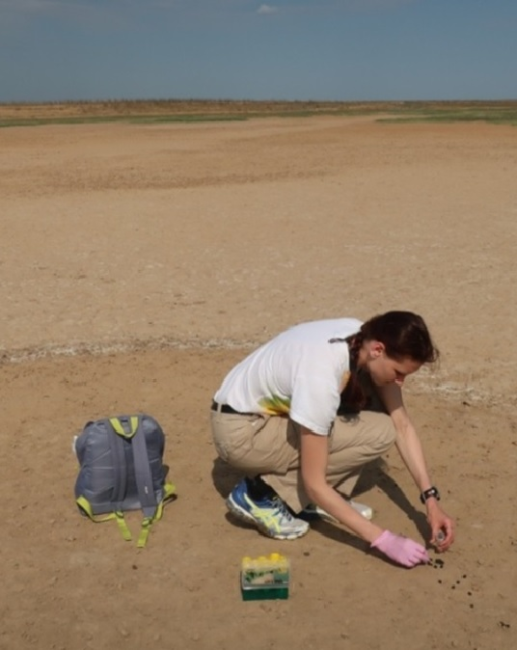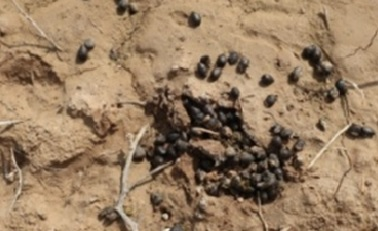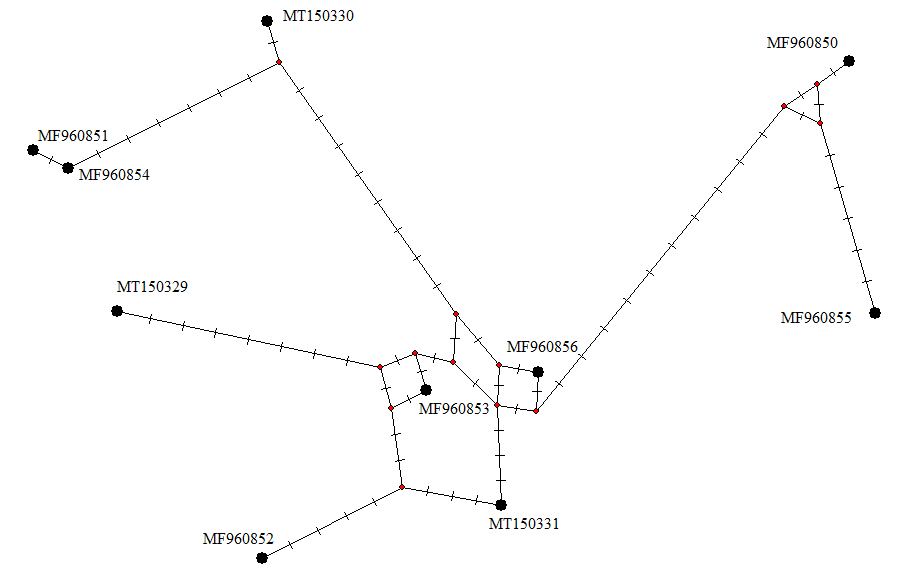
The saiga antelope (S. tatarica) is a representative of the complex of large herbivorous mammals of the Pleistocene tundra-steppe ecosystem, and at the moment it is the only antelope that has survived in Europe to this day. Even in the last century it was a valuable commercial species. But in the early 1990s, due to a sharp decline in numbers, the problem of saiga conservation acquired global significance, and it was included in Appendix II of the Convention on International Trade in Species of Wild Fauna and Flora (CITES) and the Convention on the Conservation of Migratory Species of Wild Animals (CMS), as well as on the Red List of the International Union for Conservation of Nature (IUCN/МСОП) as a critically endangered species (Appendix II).
Currently, there are five saiga populations in the world, and only one of them lives in Russia in the North-Western Caspian region in the “Black Lands” ecoregion, which includes the eastern regions of the Republic of Kalmykia and the southwestern regions of the Astrakhan region. The size of this population from the late 1990s to 2016, due to the influence of a complex of factors, including anthropogenic ones, decreased by more than 40 times. In addition, due to poaching, at that time there was a critical decrease in the proportion of adult males, i.e. the gender and age structure was disrupted. It is believed that due to a sharp decline in numbers, especially in “effective” numbers, genetic diversity may also decline, and therefore there has been a need to study this population.
A group of employees from the Institute of Ecology and Evolution of the Russian Academy of Sciences conducted a study of 95 samples from saigas in the territory of the Black Earth Nature Reserve and the Stepnoy Nature Reserve. In order to determine whether the genetic diversity of saigas has decreased over the past 20 years, the samples were divided into two samples at different times - “Old” and “New”. Samples from the “Old” period were collected at the initial stage of population depression (at the end of the 20th century) and were stored in the collection of the Cabinet of Molecular Diagnostic Methods; samples from the “New” period were collected at a time of critically low numbers (3500 individuals in 2016). During the study, three types of molecular markers were analyzed: two selectively neutral (a fragment of the mtDNA control region and nDNA microsatellite loci) and one functionally significant (a fragment of the DRB3 gene of the Major Histocompatibility Complex, responsible for the body’s immune response), which made it possible to assess the genetic diversity of the population saigas of the North-Western Caspian region during the last depression in numbers.


As a result of the analysis of the data obtained for the saiga population of the North-Western Caspian region, a high level of diversity of the mtDNA control region was described (H = 0.92+/-0.02, π = 0.028+/-0.01), which was probably preserved from the ancestral population. Interestingly, the level of diversity of the MHC DRB3 gene, associated with resistance to extracellular parasites, was also high (Ho = 0.8; He = 0.78+/-0.05), which reflects the broad adaptive capacity of the studied population. However, the low heterozygosity rates and high inbreeding coefficient obtained for microsatellite loci (Ho = 0.422+/-0.08; He = 0.514+/-0.083, Fis = 0.181) are cause for concern. This may be due to significant selective elimination of male saiga antelopes.
Currently, the most important task for preserving the saiga population of the North-Western Caspian region is to reduce androgenic influence, primarily in order to prevent poaching and habitat transformation.


The work was carried out with the support of the Russian Foundation for Basic Research grant No. 17-04-01351.
Article published:
Kashinina NV, Lushchekina AA, Sorokin PA, Tarasyan KK, Kholodova MV. (2023). The modern state of thе European saiga population (Saiga tatarica tatarica): mtDNA, DRB3 MHC gene, and microsatellite diversity // Integrative Zoology. 18. Pp. 661–676. https://doi.org/10.1111/1749-4877.12700
